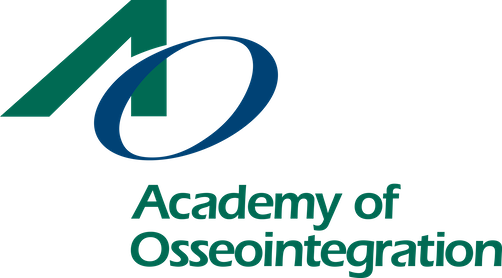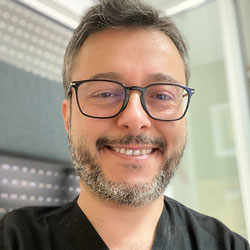-
 Setareh Lavasani, DDS, MS This presentation is an interactive and comprehensive update in 2D and 3D CBCT radiographic interpretation. It focuses on the importance of developing an analytical strategy to systematically review different types of dental images. The importance of “pattern recognition” to differentiate between different jaw pathologies; inflammatory, benign, malignant and fibrou-osseous lesions with clinical cases will be discussed. An overview of possible differential diagnosis for paranasal sinuses opacifications and head and neck soft tissue calcifications are reviewed. Recorded - August 19, 2021
Setareh Lavasani, DDS, MS This presentation is an interactive and comprehensive update in 2D and 3D CBCT radiographic interpretation. It focuses on the importance of developing an analytical strategy to systematically review different types of dental images. The importance of “pattern recognition” to differentiate between different jaw pathologies; inflammatory, benign, malignant and fibrou-osseous lesions with clinical cases will be discussed. An overview of possible differential diagnosis for paranasal sinuses opacifications and head and neck soft tissue calcifications are reviewed. Recorded - August 19, 2021 -
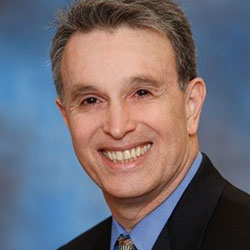 Robert Lemke, DDS, MD This presentation will review the biology of pain in the human body, history of pain management and available pain management options along with how each one affects the human body differently. I will also discuss the pharmacology of opioids and warning signs in patients that may be seeking opioids. The effects of an opioid addiction will also be discussed. Recorded - April 27, 2021
Robert Lemke, DDS, MD This presentation will review the biology of pain in the human body, history of pain management and available pain management options along with how each one affects the human body differently. I will also discuss the pharmacology of opioids and warning signs in patients that may be seeking opioids. The effects of an opioid addiction will also be discussed. Recorded - April 27, 2021 -
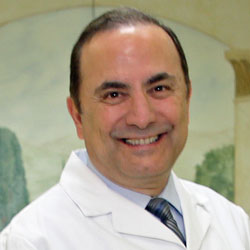 Tony Daher, DDS, MSEd The All-On-X prosthesis is a “popular” option for the treatment of completely edentulous arches with attractive esthetic and functional results. Attractive esthetic and functional results are the results of a well-fabricated presurgical “All-On-Non” Removable Complete Dentures. This concept uses X number of dental implants that are biomechanically positioned for maximum stability of the implant prosthesis. The All-On-X prosthesis concept continued, for many years now, to be a reliable and has a predictable high success rate. The final prosthesis can be made in various grades of laboratory materials from acrylic to metallo-ceramic to Zirconia, always with the same attention to esthetic and functional details. With the use of slides and videos, the presentation will cover many clinical tips needed for a predictable outcome using the All-On-X concept. Recorded - July 14, 2021
Tony Daher, DDS, MSEd The All-On-X prosthesis is a “popular” option for the treatment of completely edentulous arches with attractive esthetic and functional results. Attractive esthetic and functional results are the results of a well-fabricated presurgical “All-On-Non” Removable Complete Dentures. This concept uses X number of dental implants that are biomechanically positioned for maximum stability of the implant prosthesis. The All-On-X prosthesis concept continued, for many years now, to be a reliable and has a predictable high success rate. The final prosthesis can be made in various grades of laboratory materials from acrylic to metallo-ceramic to Zirconia, always with the same attention to esthetic and functional details. With the use of slides and videos, the presentation will cover many clinical tips needed for a predictable outcome using the All-On-X concept. Recorded - July 14, 2021 -
 Luca Fiorillo, DDS, PhD, MSc Nowadays, dental implantology represents the gold standard in oral rehabilitation, simple or complex. The high predictability over time, and the related techniques to allow the possible rehabilitations are increasingly simple and feasible for the clinician. All this is guaranteed thanks to the presence of new biomaterials, starting from the implant surfaces and their primary or secondary geometries, to arrive at all the biomaterials related to the regeneration and maintenance of peri-implant tissues. The new challenge for the clinician concerns the possibility of keeping these tissues healthy and limiting implant complications, including peri-implantitis. Recorded - August 10, 2021
Luca Fiorillo, DDS, PhD, MSc Nowadays, dental implantology represents the gold standard in oral rehabilitation, simple or complex. The high predictability over time, and the related techniques to allow the possible rehabilitations are increasingly simple and feasible for the clinician. All this is guaranteed thanks to the presence of new biomaterials, starting from the implant surfaces and their primary or secondary geometries, to arrive at all the biomaterials related to the regeneration and maintenance of peri-implant tissues. The new challenge for the clinician concerns the possibility of keeping these tissues healthy and limiting implant complications, including peri-implantitis. Recorded - August 10, 2021 -
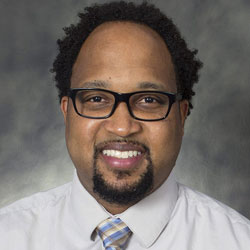 Darnell Kaigler, DDS, MS, PhD Current treatment modalities to restore oral tissues and teeth provide functional and structural restoration of the compromised or lost tissues; yet, many of these approaches do not meet the need for more biologic and physiologic treatment outcomes. The emergence of tissue engineering and regenerative medicine over the past 25 years has been a gateway to new paradigms of treatment in dentistry, particularly for periodontal, peri-implant, and alveolar bone regeneration. Historically, the use of different biomaterials and grafting agents has established a strong platform for the development of therapeutic concepts toward achieving “true“ tissue regeneration. More recently, the use of biologic agents and the advent of cell therapies has enabled an even greater capacity to achieve regeneration in more complex and compromised clinical scenarios. This course will provide an overview of the evolution of stem cell therapeutic approaches in dentistry and highlight current applications for periodontal, peri-implant, and alveolar bone regeneration using stem cells. Key regenerative principles will be discussed and clinical cases will be presented demonstrating how these strategies can be implemented in clinical practice. Recorded - May 25, 2021
Darnell Kaigler, DDS, MS, PhD Current treatment modalities to restore oral tissues and teeth provide functional and structural restoration of the compromised or lost tissues; yet, many of these approaches do not meet the need for more biologic and physiologic treatment outcomes. The emergence of tissue engineering and regenerative medicine over the past 25 years has been a gateway to new paradigms of treatment in dentistry, particularly for periodontal, peri-implant, and alveolar bone regeneration. Historically, the use of different biomaterials and grafting agents has established a strong platform for the development of therapeutic concepts toward achieving “true“ tissue regeneration. More recently, the use of biologic agents and the advent of cell therapies has enabled an even greater capacity to achieve regeneration in more complex and compromised clinical scenarios. This course will provide an overview of the evolution of stem cell therapeutic approaches in dentistry and highlight current applications for periodontal, peri-implant, and alveolar bone regeneration using stem cells. Key regenerative principles will be discussed and clinical cases will be presented demonstrating how these strategies can be implemented in clinical practice. Recorded - May 25, 2021 -
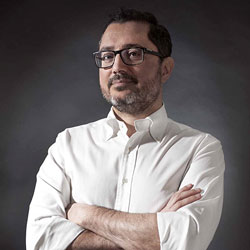 Luigi Canullo, DDS, PhD Recently published Literature showed that interactions between soft tissues and a foreign body, like an abutment, was mediated by the abutment material features and the tissue characteristics, so far defined only using the biotype. However, once analyzed in detail the soft tissue adaptation to the abutment, different variables were demonstrated to simultaneously interact in this scenario. In fact, the soft tissue expression appeared to depend not only on the histologic characteristics but mostly on the individual inflammatory and regenerative patterns (epigenetics). At the same time, the prosthetic work flow was also demonstrated to influence the healing displays, as well as the abutment surface features, which could be didactically summarized using a macro-, micro- and nano- scale. In fact, while a narrower macro morphology was clearly associated to a better bone level maintenance and better esthetic outcomes, moderately rough microtopography was shown to enhance the connective/metallic adhesion. An even more magnified capture of the situation revealed that more hydrophilic and more decontaminated surfaces presented a stronger tissue/metallic adhesion, correlated to a consequent positive impact on bone level changes. Finally, last but not least parameter, in a microbiological contaminated environment like the oral cavity, microbiological colonization of the abutment surface was shown to influence the soft tissue/foreign body interaction. Recorded - April 13, 2021
Luigi Canullo, DDS, PhD Recently published Literature showed that interactions between soft tissues and a foreign body, like an abutment, was mediated by the abutment material features and the tissue characteristics, so far defined only using the biotype. However, once analyzed in detail the soft tissue adaptation to the abutment, different variables were demonstrated to simultaneously interact in this scenario. In fact, the soft tissue expression appeared to depend not only on the histologic characteristics but mostly on the individual inflammatory and regenerative patterns (epigenetics). At the same time, the prosthetic work flow was also demonstrated to influence the healing displays, as well as the abutment surface features, which could be didactically summarized using a macro-, micro- and nano- scale. In fact, while a narrower macro morphology was clearly associated to a better bone level maintenance and better esthetic outcomes, moderately rough microtopography was shown to enhance the connective/metallic adhesion. An even more magnified capture of the situation revealed that more hydrophilic and more decontaminated surfaces presented a stronger tissue/metallic adhesion, correlated to a consequent positive impact on bone level changes. Finally, last but not least parameter, in a microbiological contaminated environment like the oral cavity, microbiological colonization of the abutment surface was shown to influence the soft tissue/foreign body interaction. Recorded - April 13, 2021 -
 Tara Aghaloo, DDS, MD, PhD Dental implants are a known and predictable treatment option for missing teeth, where most patients today desire this therapy. Although implant survival is extremely high, these favorable outcomes depend greatly on proper case selection, minimizing medical risk factors, careful surgical and prosthetic execution, and prevention and management of complications. In clinical practice, patient demands are becoming more difficult to meet, where they often seek immediate implants with immediate function. This leaves the practicing clinician with a dilemma of meeting patient expectations, but often without scientific evidence for our treatment protocols. This presentation will update the practicing dentist on achieving the most ideal and successful implant outcomes, improving case presentations, obtaining increased case selection, and avoiding and managing complications. Recorded - June 5, 2021
Tara Aghaloo, DDS, MD, PhD Dental implants are a known and predictable treatment option for missing teeth, where most patients today desire this therapy. Although implant survival is extremely high, these favorable outcomes depend greatly on proper case selection, minimizing medical risk factors, careful surgical and prosthetic execution, and prevention and management of complications. In clinical practice, patient demands are becoming more difficult to meet, where they often seek immediate implants with immediate function. This leaves the practicing clinician with a dilemma of meeting patient expectations, but often without scientific evidence for our treatment protocols. This presentation will update the practicing dentist on achieving the most ideal and successful implant outcomes, improving case presentations, obtaining increased case selection, and avoiding and managing complications. Recorded - June 5, 2021 -
 Shih-Cheng Wen, DDS, MS Dental implant surgery has become a modern science and adjusting the occlusion of the implant restoration is one of the important factors to avoid the complications of dental implants. This presentation will share some literature on the subject of dental implant occlusion. Recorded - October 14, 2021
Shih-Cheng Wen, DDS, MS Dental implant surgery has become a modern science and adjusting the occlusion of the implant restoration is one of the important factors to avoid the complications of dental implants. This presentation will share some literature on the subject of dental implant occlusion. Recorded - October 14, 2021 -
 Edward Shih-Chang Tseng, DDS, MS This lecture will introduce the biologic classification of soft tissue graft briefly and then highlight the clinical applications of connective tissue graft to enhance esthetics, increase keratinized tissue and prevent /correct the mucosal recession around the dental implant. The principles, procedures and technique notes of applying the connective tissue graft in implant dentistry will be addressed via not only clinical slides but also surgical clips and animations. Recorded - November 18, 2021
Edward Shih-Chang Tseng, DDS, MS This lecture will introduce the biologic classification of soft tissue graft briefly and then highlight the clinical applications of connective tissue graft to enhance esthetics, increase keratinized tissue and prevent /correct the mucosal recession around the dental implant. The principles, procedures and technique notes of applying the connective tissue graft in implant dentistry will be addressed via not only clinical slides but also surgical clips and animations. Recorded - November 18, 2021

